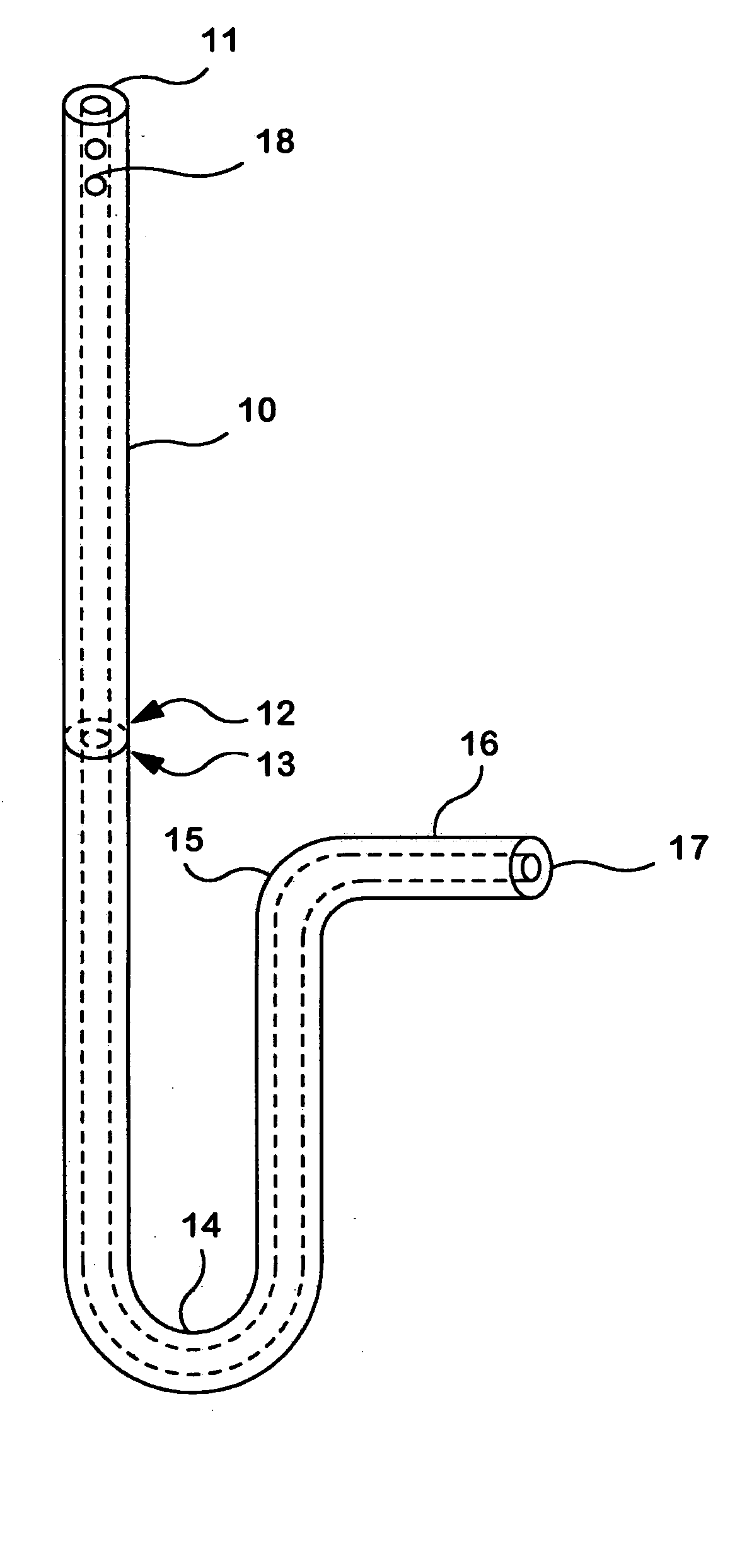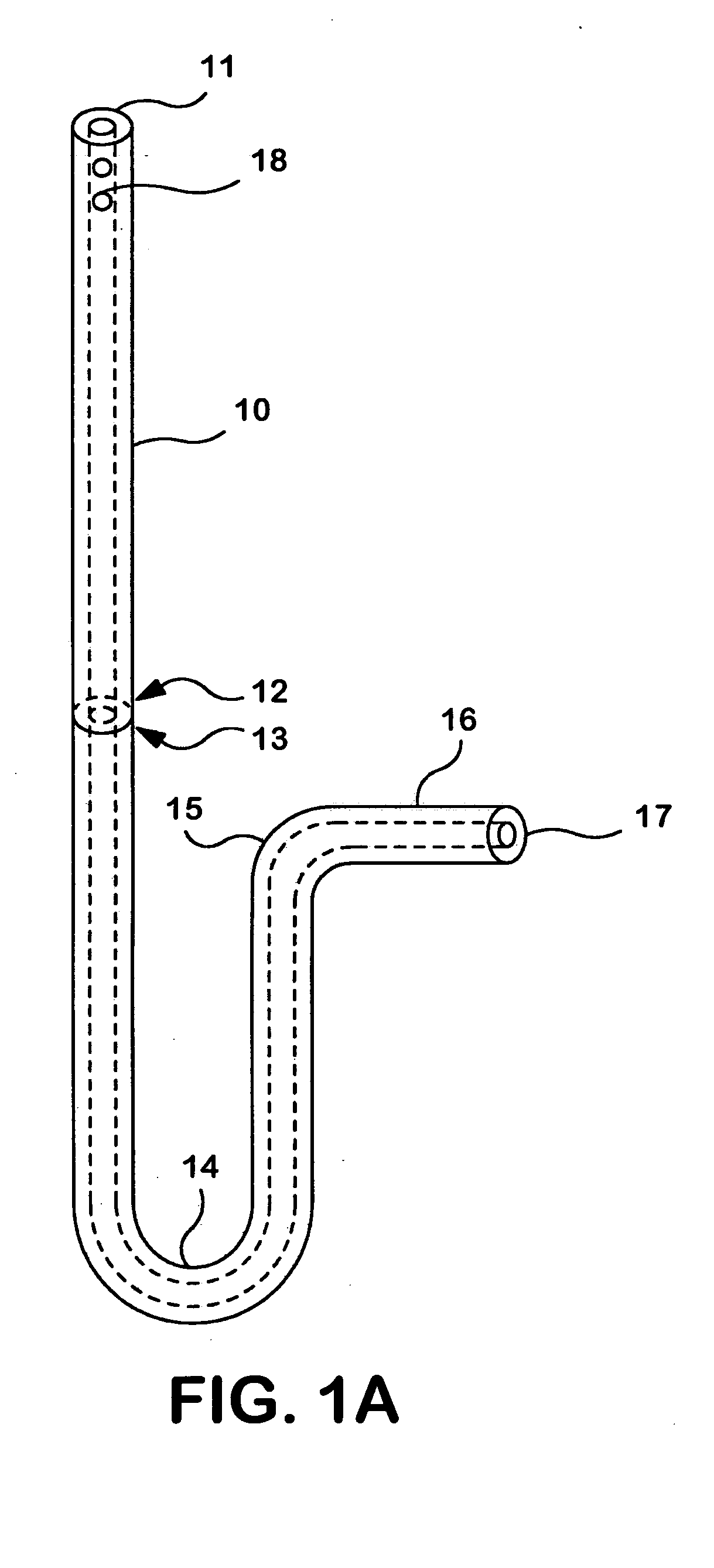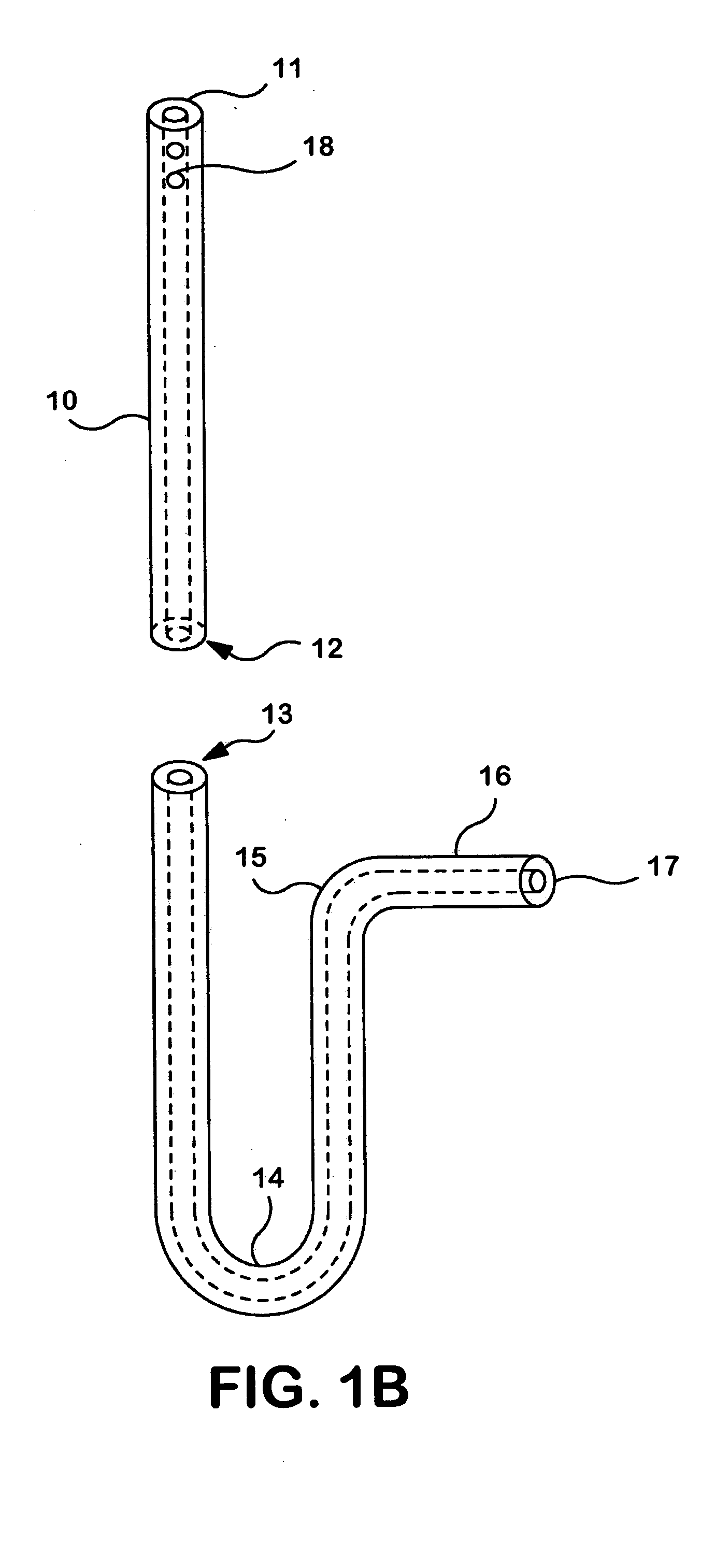Dual flex insertion device for enema, douche or colonic irrigation
a technology of insertion device and enema, which is applied in the direction of medical devices, other medical devices, etc., can solve the problems of complicated design of irrigation device, prohibitively expensive, complicated irrigators, etc., and achieves the effect of reducing the number of insertion devices, and reducing the number of insertions
- Summary
- Abstract
- Description
- Claims
- Application Information
AI Technical Summary
Benefits of technology
Problems solved by technology
Method used
Image
Examples
Embodiment Construction
[0026] With reference to the drawings there is shown in FIG. 1 a first tubular portion 10 made from a soft pliable material is connected to a curved second tubular portion 14. The first tubular portion 10 has a distal end 11 and a proximal end 12. The second tubular portion 14 also has a distal portion 13 and a proximal end 17. Although not shown, the first tubular portion 10 has a first flexural modulus as measured by ATSM standards wherein the first tubular portion can be inserted, removed and then re-inserted into the rectum without any harm or discomfort to a patient. It will be understood that a suitable flexural modulus for determining what can cause harm or discomfort varies across a range for flexural modulus' but is specifically keyed to preventing injury to the inner colon wall. For example, the flexural modulus is adjusted such that even when inserted improperly into the rectum the inserted portion will not cause colon perforation, sepsis or injury to the anal canal or re...
PUM
 Login to View More
Login to View More Abstract
Description
Claims
Application Information
 Login to View More
Login to View More - R&D
- Intellectual Property
- Life Sciences
- Materials
- Tech Scout
- Unparalleled Data Quality
- Higher Quality Content
- 60% Fewer Hallucinations
Browse by: Latest US Patents, China's latest patents, Technical Efficacy Thesaurus, Application Domain, Technology Topic, Popular Technical Reports.
© 2025 PatSnap. All rights reserved.Legal|Privacy policy|Modern Slavery Act Transparency Statement|Sitemap|About US| Contact US: help@patsnap.com



